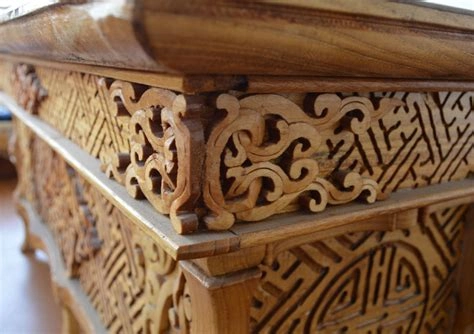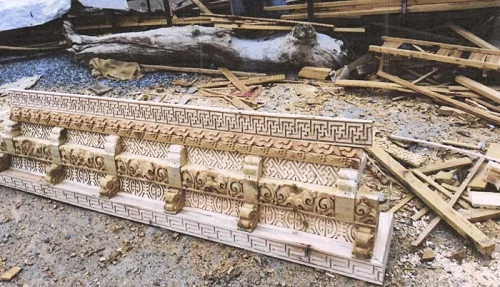The exquisite Ladakh wood carving, also known as ‘Ladakh Shingskos’, has become the first handicraft from the Union Territory to be granted a Geographical Indication (GI) tag by the Department for Promotion of Industry and Internal Trade (DPIIT) under the Ministry of Commerce and Industry.
Geographical Indication is used to identify agricultural, natural, or manufactured goods originating in the said area. Originating from a definite territory in India, it should have a special quality or characteristics unique to the geographical indication, such as Basmati rice, Darjeeling tea, Kancheepuram silk saree, Alphonso mango, Nagpur orange, Kolhapuri chappal, Bikaneri bhujia, etc.
It confers legal protection to Geographical Indications in India, prevents unauthorized use of a registered Geographical Indication by others and boosts exports of Indian Geographical indications by providing legal protection besides promoting the economic prosperity of producers.

Located on a significant and historic trade route linking Central Asia, China, Tibet, and India, the cultures and traditions in Ladakh show an amalgamation of different cultures from ancient to medieval periods.
Ladakh wood carving has been an aesthetically vibrant art form in the Ladakh region, including the capital Leh and Kargil.
Last year, Tsering Namgyal, a creative woodcraft artist belonging to Hinju village in Ladakh where wood carving has been practised for over successive generations, was awarded Padma Shri for his contributions to craftsmanship and the development of the art.
Craftsmen etch floral or other patterns through the dexterous use of a mallet and chisel on wood. Wood carving is done on a variety of objects ranging from furniture (tables, chairs, writing desks, dining tables, etc.) to articles of personal use like jewellery boxes, photo frames and various other articles used for interior decoration.

The artistic skills of local artisans borrowed heavily from Tibetan Buddhism, are also projected on the wooden beams or pillars in monasteries which are some of the oldest samples of wood carving work preserved to this day.
Importantly, all the motifs and designs with colors used in the wood carving in Ladakh have very specific meanings and linkages with local culture, society and rituals.
“Congratulations to the people of Ladakh as Ladakh’s #WoodCarving has been granted a #GITag, a first of its kind. The recognition will not only protect the craft but also promote it globally, benefiting the artisans & creating new employment opportunities,” tweeted the Ladakh Autonomous Hill Development Council (LAHDC).
Ladakh wood carving is also highly demanded across the world, especially in Buddhist countries, for religious, cultural, and spiritual purposes.




















